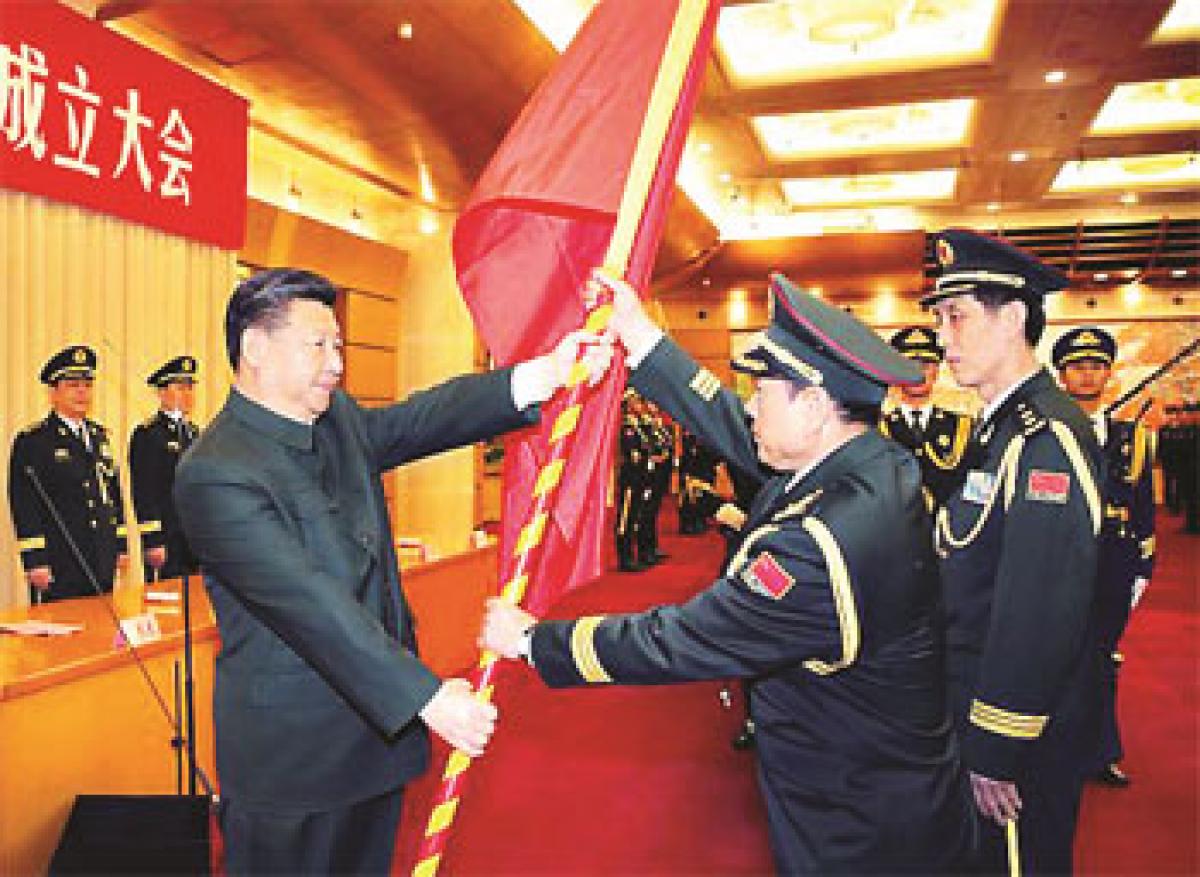Live
- 555th Prakash Purab celebrated with gaiety
- Good news for Atmakur farmers
- High-risk aortic valve replacement surgery performed successfully
- HMWSSB MD holds review meeting on OTS-2024 scheme
- Dhobi Ghat assessed for potential to host sports complex
- SCR bets on LHB train coaches for safety
- SVU felicitates best teachers
- Tata Group to market Araku coffee
- Union Min assures development of infra in tribal mandals
- KTR, Harish will turn political rivals soon: TPCC Chief
Just In

x
Highlights
China has created three new military bodies as part of reforms to modernize its military the world’s largest standing force and improve its fighting capacity.
 Beijing: China has created three new military bodies as part of reforms to modernize its military — the world’s largest standing force — and improve its fighting capacity.
Beijing: China has created three new military bodies as part of reforms to modernize its military — the world’s largest standing force — and improve its fighting capacity.
State television on Saturday showed President Xi Jinping giving military flags to the leaders of the three new units — a general command for the People’s Liberation Army, a missile force, and a strategic support force.
At the ceremony, which took place Thursday, Xi and PLA officers and soldiers sang the national anthem.
Xi said the three new units were created as part of a modernization reform and “to realize the Chinese dream of a strong military.”
He has promulgated the idea of a “Chinese dream” involving “the great renewal of the Chinese nation” and sees a strong military as key to this.
The military reform comes as China has become more assertive in pressing its claims to territory in the East China Sea and South China Sea, increasing tensions with its neighbors.
In a bid to show China poses no expansionist threat, Xi announced in September that he would reduce China’s 2.3 million-strong army by 300,000 troops. However, it will still remain the world’s largest.
Described by Xi as a “core force of strategic deterrence,” the PLA Rocket Force will replace the Second Artillery Force in controlling China’s nuclear arsenal and conventional missiles. The new Strategic Support Force will likely focus on cyber warfare.
Other reform plans include phasing out old equipment and developing new weapons systems.
The reforms also tighten the party’s leadership over the army. It used to be supervised by four headquarters, while now the army’s general command is controlled directly by the Central Military Commission, whose chairman is Xi.The military has been the focus of an anticorruption campaign spearheaded by Xi.
The two highest-ranking officers to be accused of taking bribes were vice-chairmen of the Central Military Commission.

Next Story
More Stories
ADVERTISEMENT
© 2024 Hyderabad Media House Limited/The Hans India. All rights reserved. Powered by hocalwire.com







